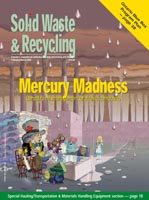
Perhaps Lewis Carroll was referring to the twinkle of mercury used for hat production in the 1800s, which led to the Hatter’s ultimate madness. Mercury use dates back to 4,500 BC when Egyptians and Chinese used it as a pigment to paint their tombs and preserve their dead. Since then humans have used this unique form of liquid metal for a variety of applications, including warding off evil spirits, healing, processing precious metals, and more recently, conducting electricity.
The toxic effects of mercury also date back to its early applications when workers in mercury mines were almost guaranteed death or insanity. More recent cases of direct mercury poisoning have occurred in Minamata, Japan (1956), Iraq (1971), and northwestern Ontario (1969). The first two incidents led to thousands of deaths and highly elevated mercury levels in survivors. High-level mercury exposure can lead to birth defects, brain, kidney or liver damage, and central nervous system disorders. More recently, medical researchers have concluded that chronic exposure to low-levels of mercury by children and fetuses increases the risk of neurological damage, behavioral problems and learning disabilities. So serious are the toxicological effects of mercury exposure that a leading medical researcher, Dr. Philippe Grandjean, commented on governments inaction on mercury, warning, “Given the existence of many other neuro-toxins about which we know much less, a regulatory stalemate on mercury is bad news for the protection of the brains of future generations”.

